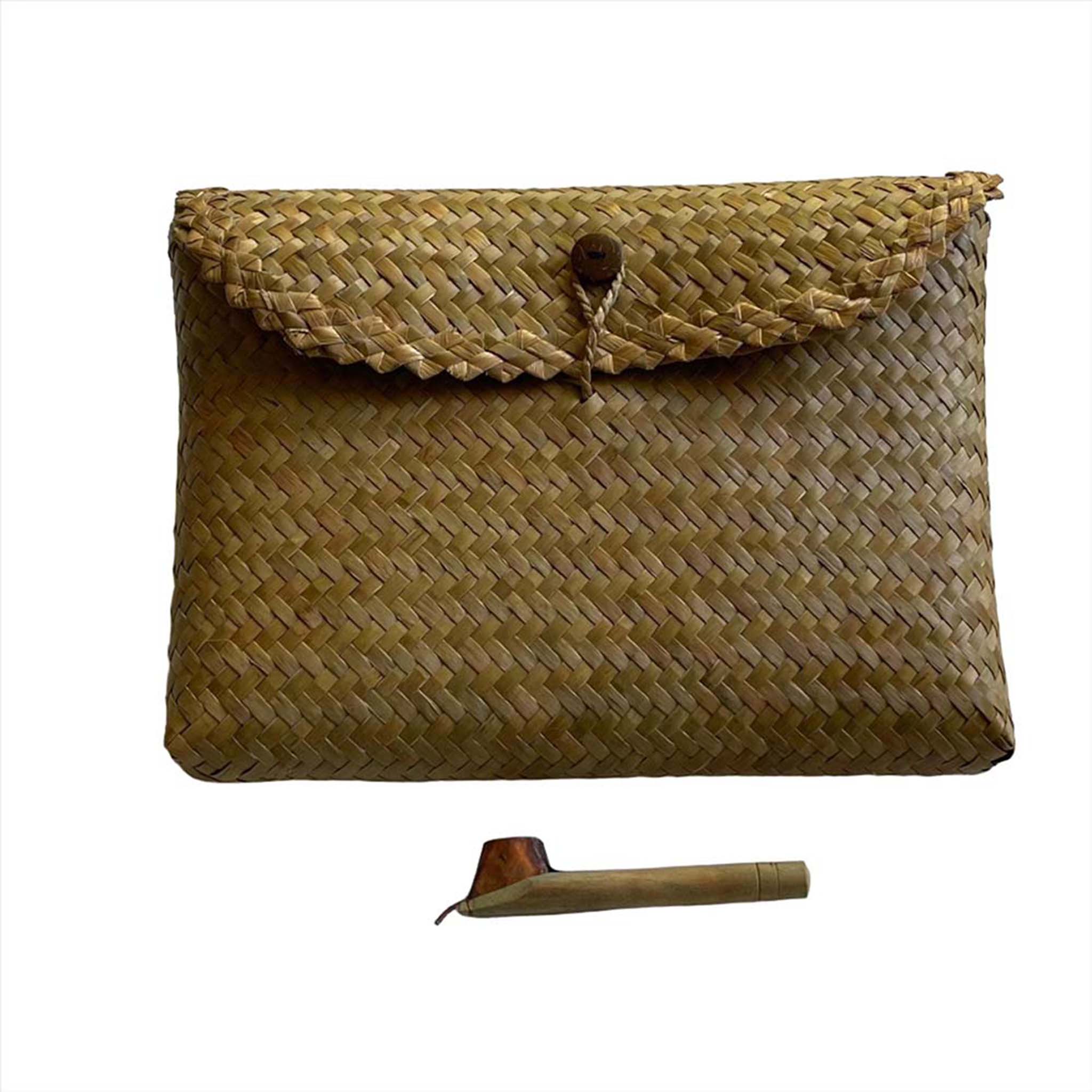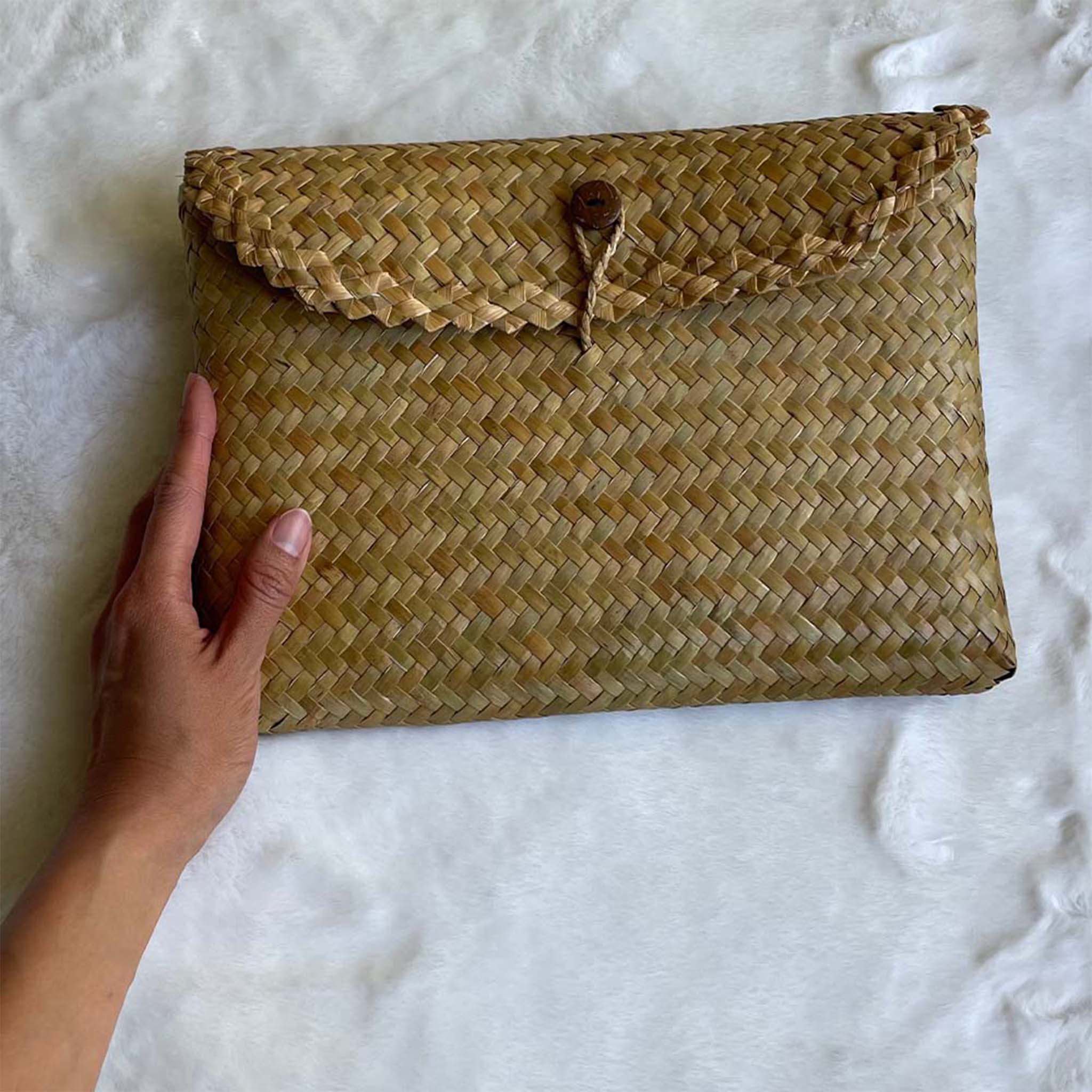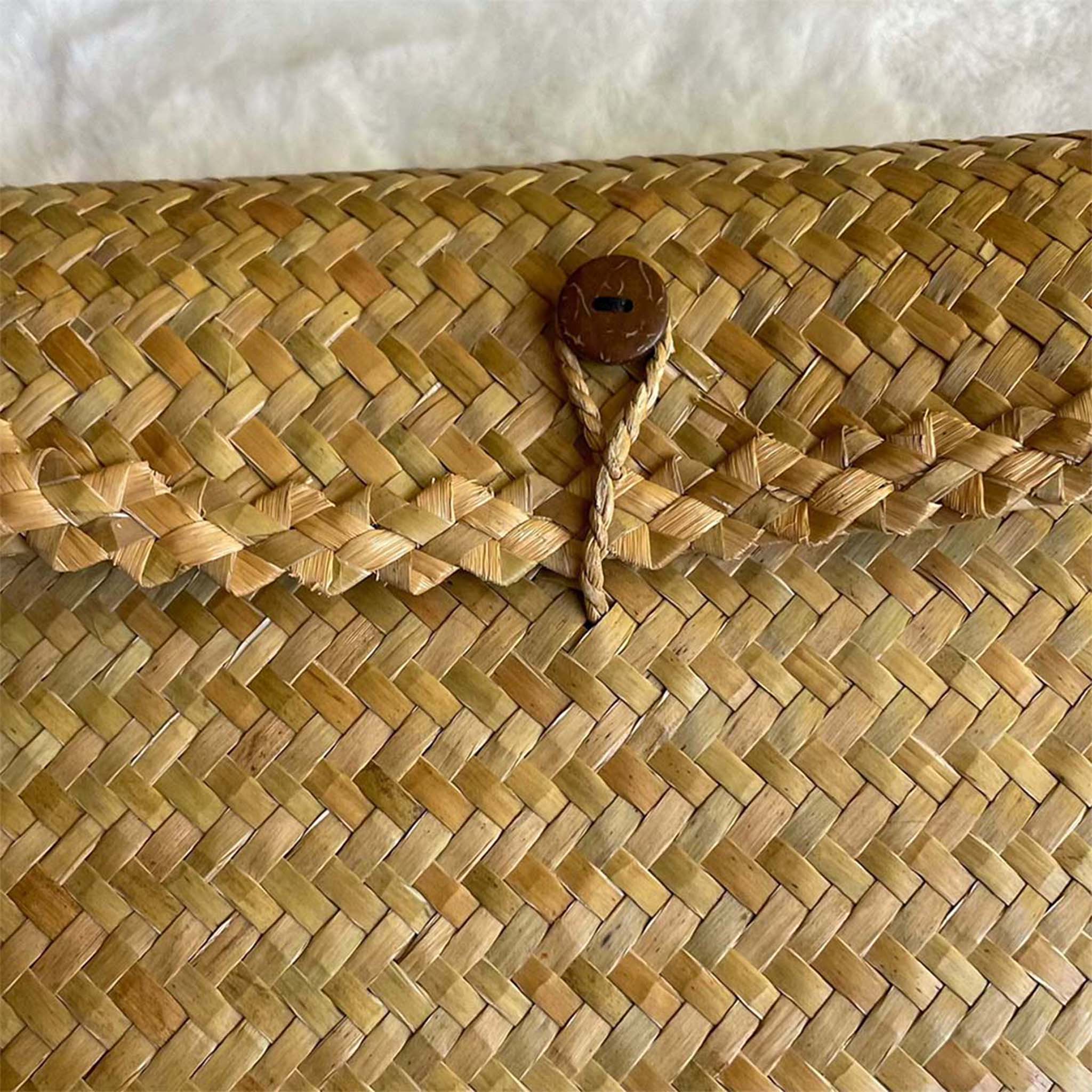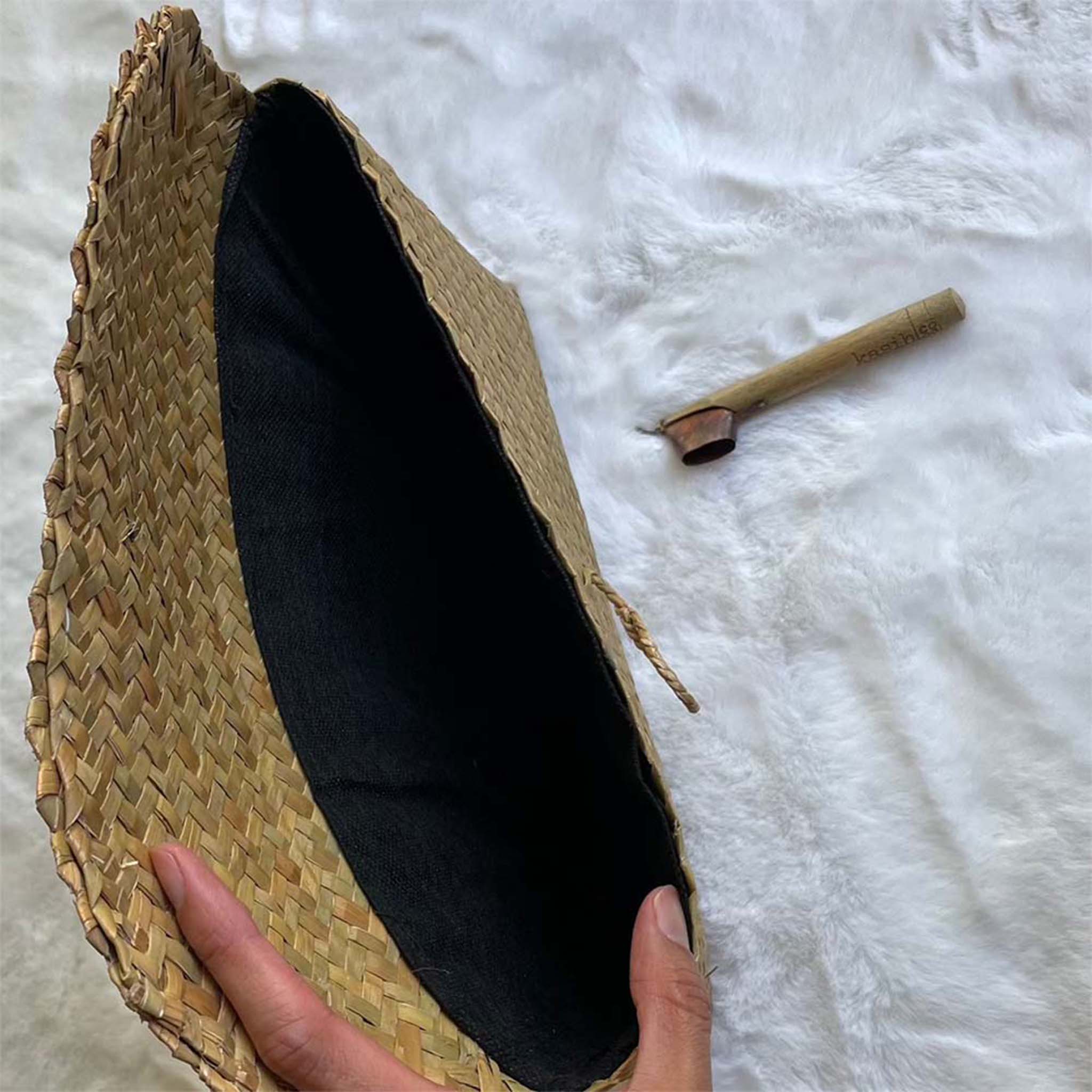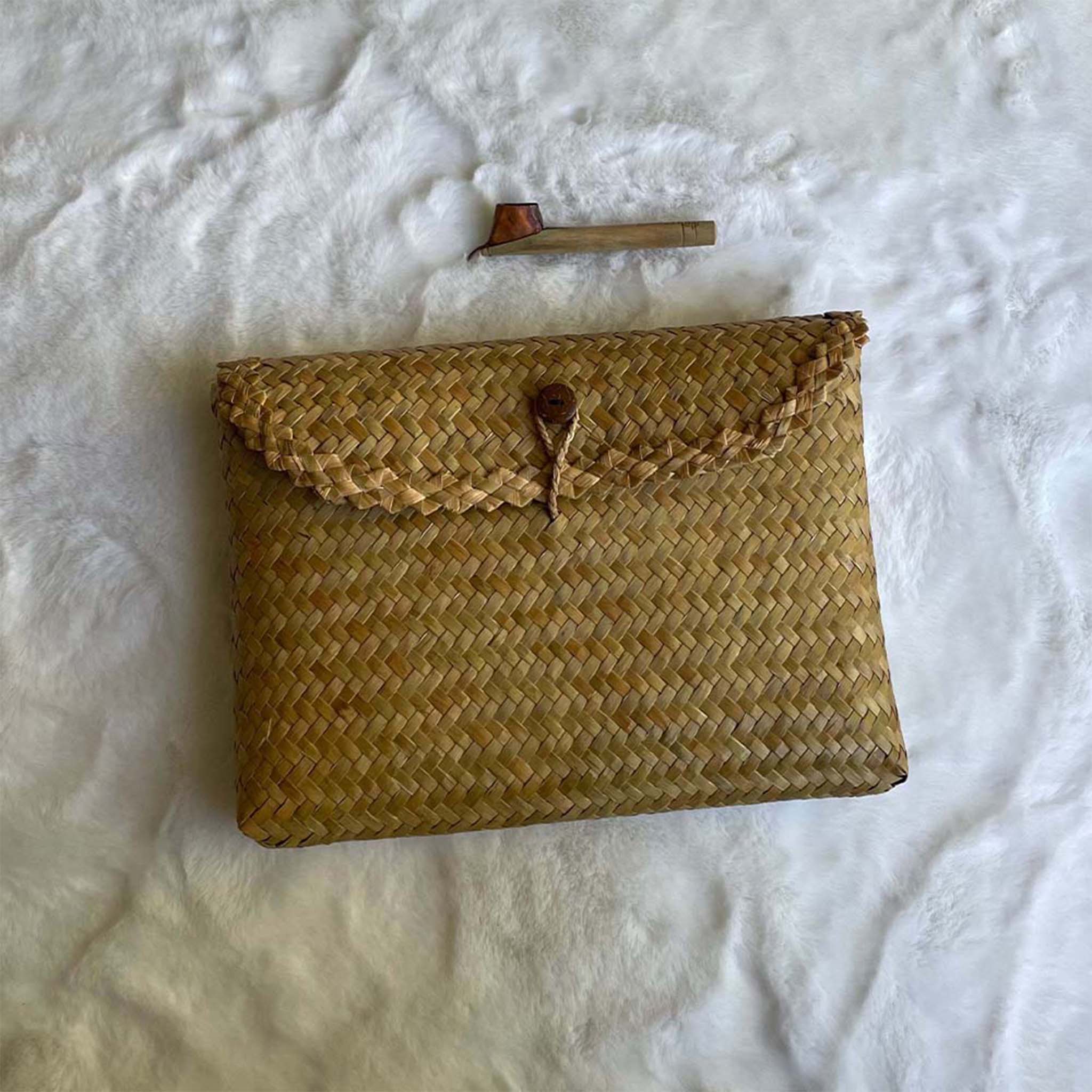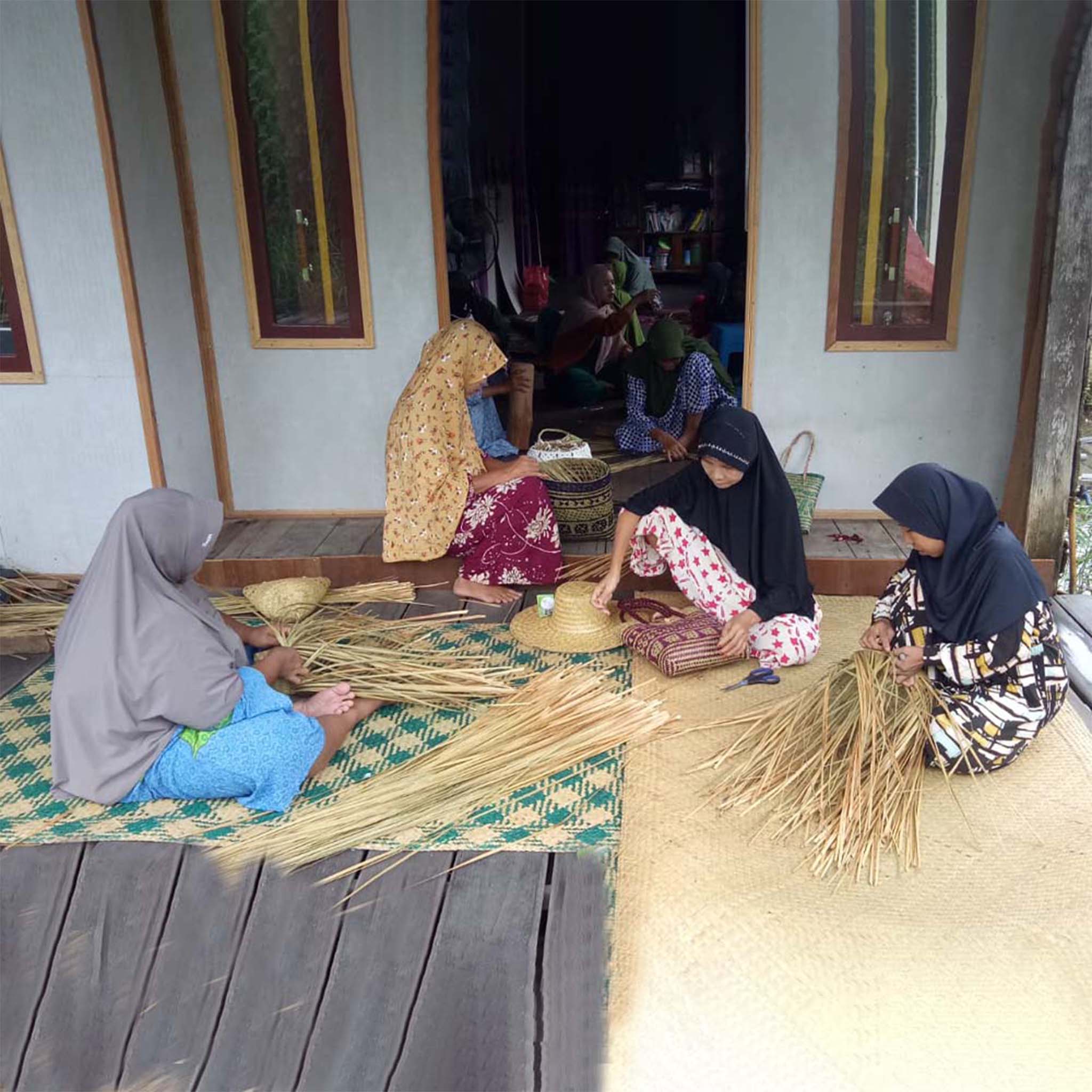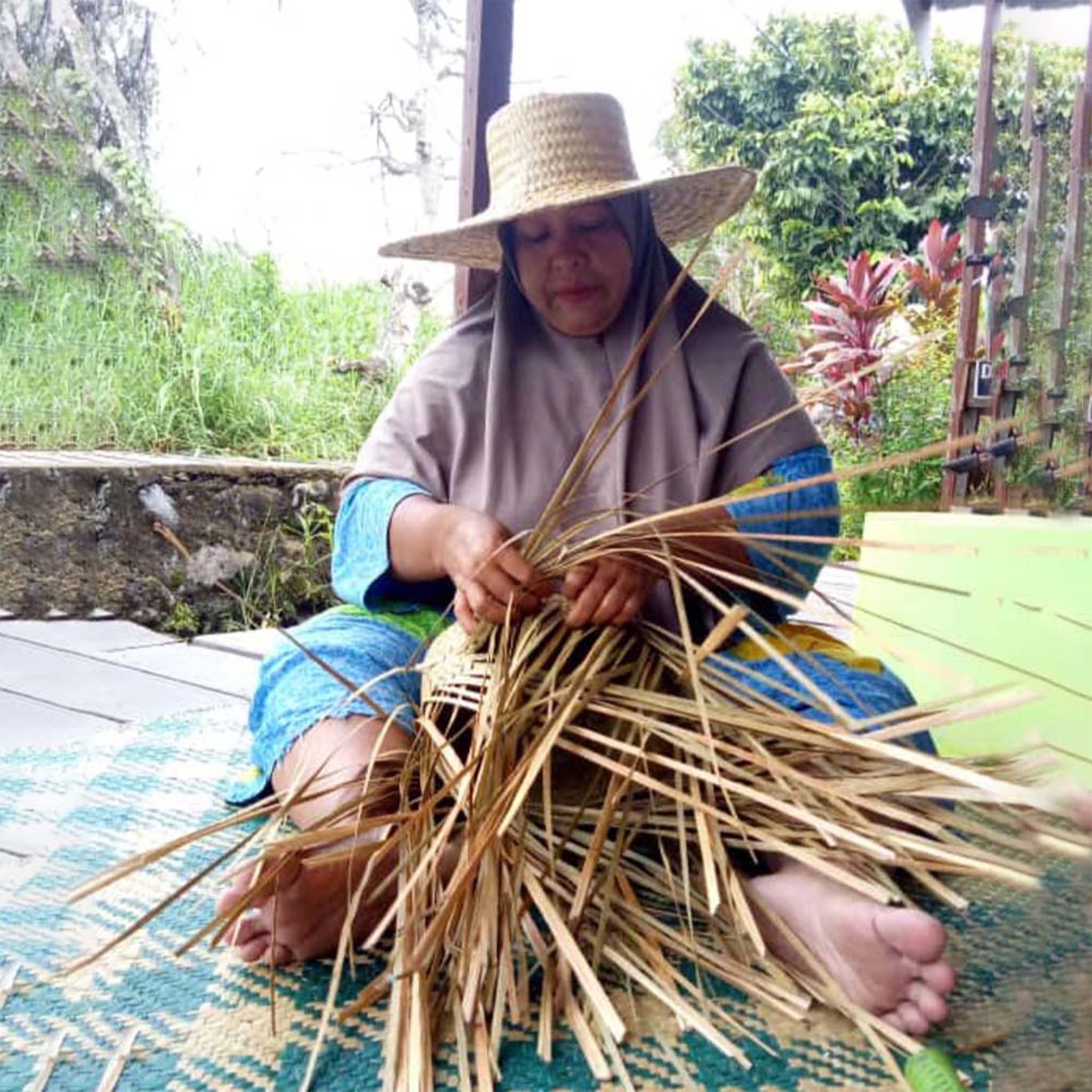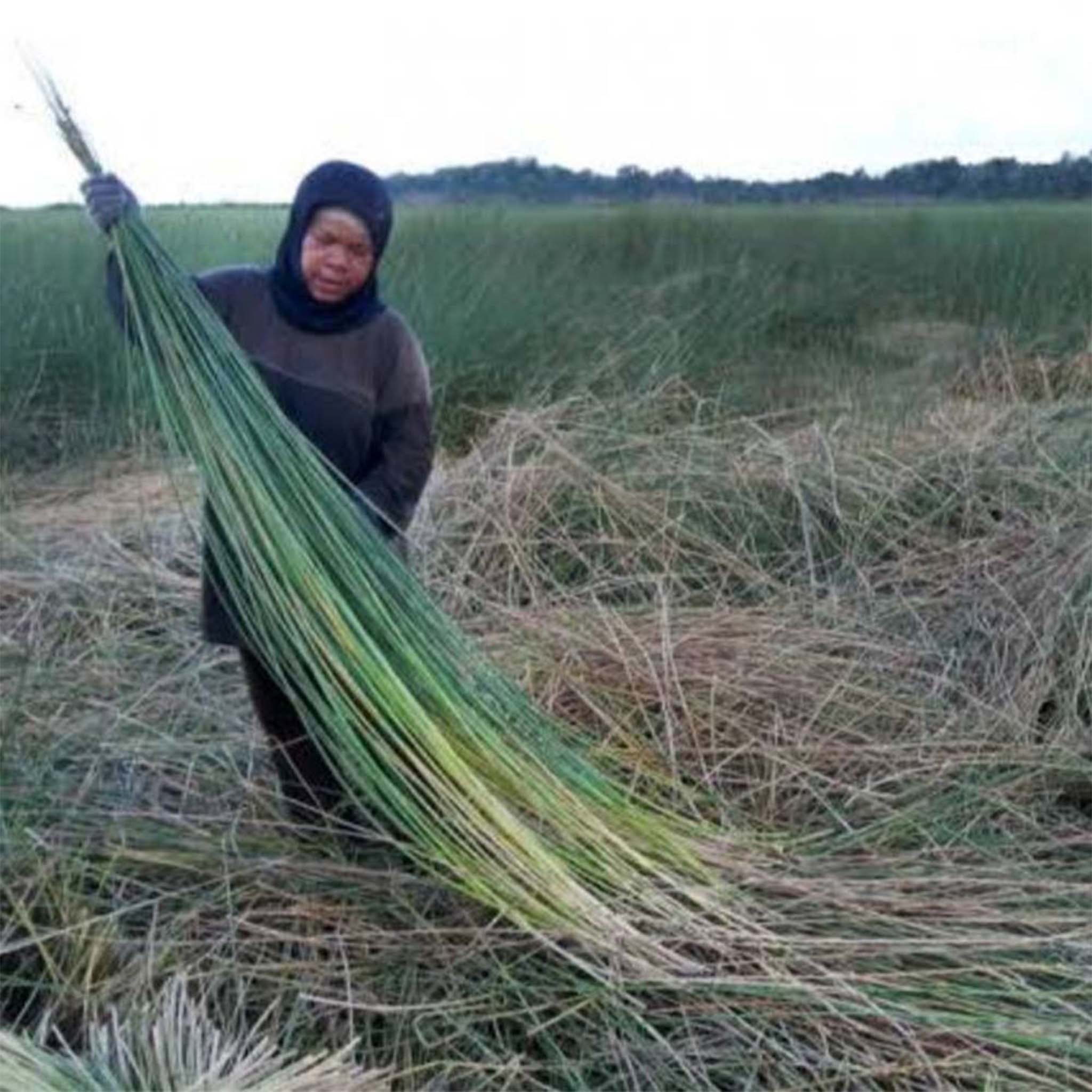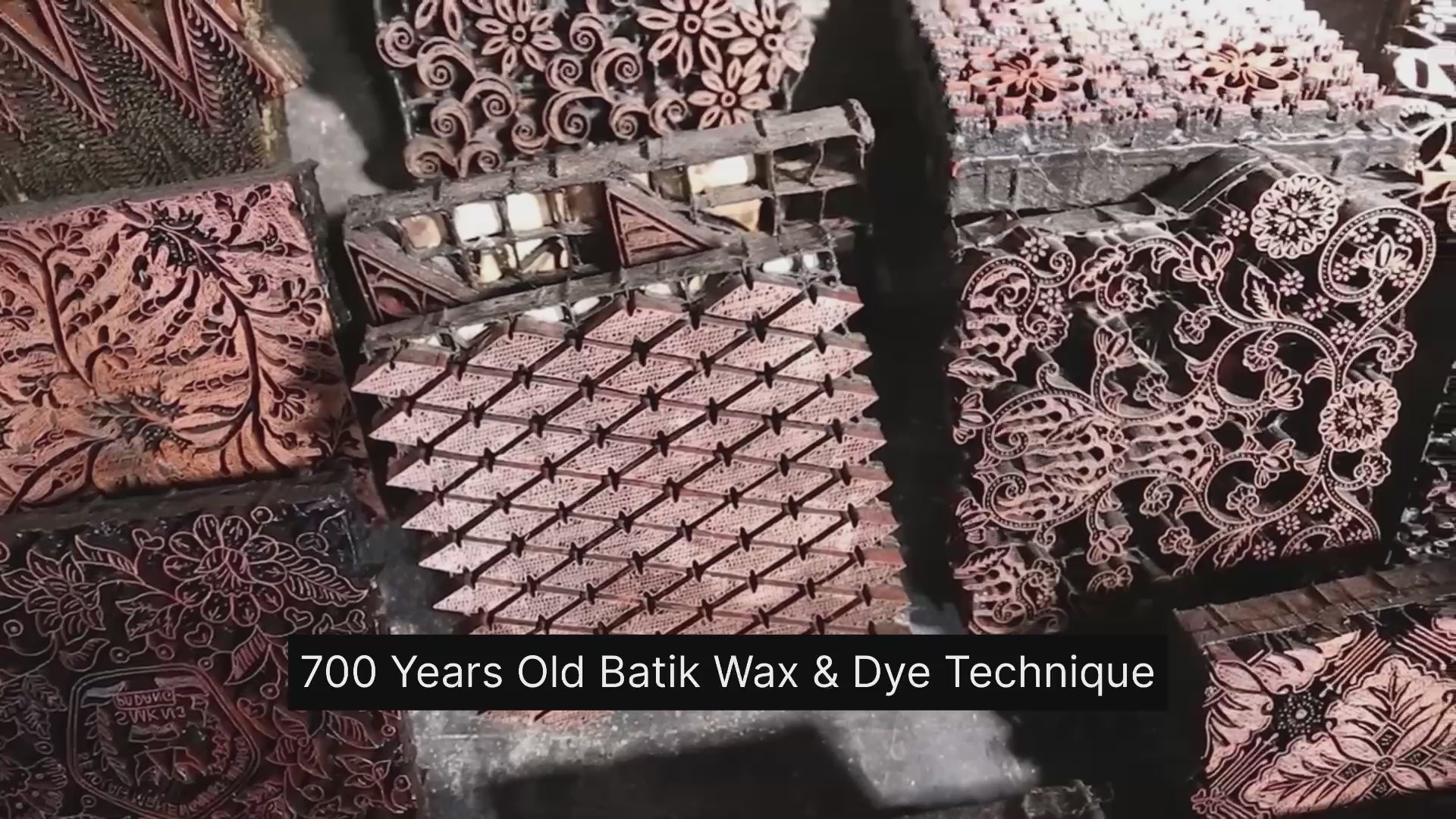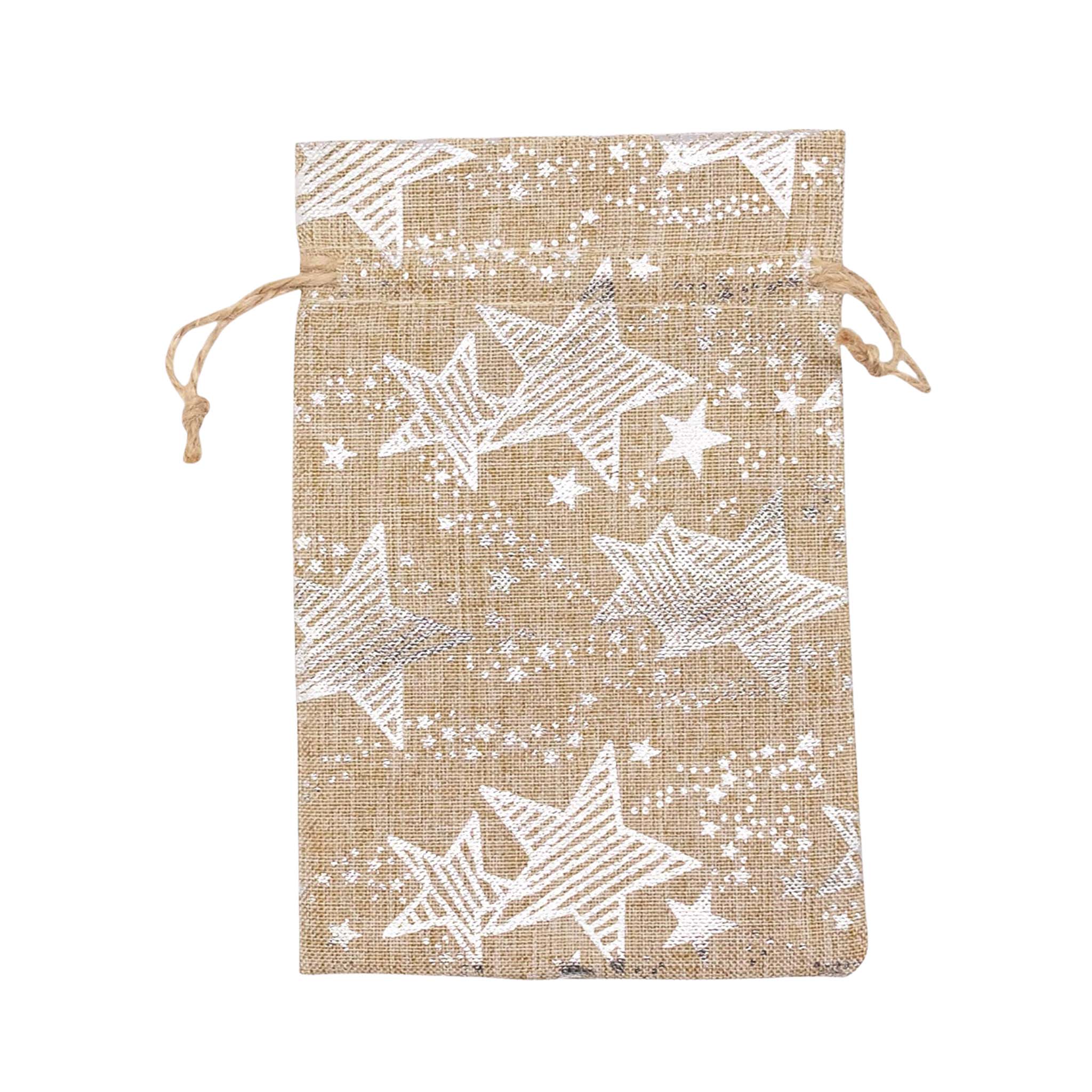Gift Set of Handwoven Pouch and Canting Wax and Dye Tool, Handwoven Natural Bag, Gift for Her
Couldn't load pickup availability
This is a gift set of two items which include: a handwoven pouch from natural material called Grey Sedge - a type of woody plant from swamp in Borneo that is handwoven by women Dayak tribe; and lastly a Batik Canting Wax & Dye tool that is used to hand draw our batiks. You can add this gift set with either our bandana or our kimono robe.
About our handwoven Grey Sedge pouch:
- This is a handwoven all natural pouch made of Grey Sedge plant "Purun". This wild plant grows abundant in the peatlands in Borneo, Indonesia and is used by a group of women in Borneo to weave into pouch, bag and basket.
- Size: 11.8 x 7.8 x1.18 "
- The Dayak tribe in Borneo, Indonesia took the Purun plants from peat swamps around the village using a boat. The most difficult process is to pound the Purun until it becomes thin, before weaving them into pouches.
- Purun is organic and easily decomposes, so this pouch is eco-friendly, 100% natural and reusable beyond our gift set.
About our canting wax and dye tool:
- Canting is a traditional Javanese tool for applying wax in batik making.
- It consists of a small copper reservoir attached to a wood handle.
- The reservoir holds hot wax, which is then drawn onto fabric in intricate patterns, used to make our batik bandana or robes.
- Used in conjunction with dyes to create colorful designs.
Kasih Co-op shares the culture and craft of Indonesia's batik
Handcrafted 700 years old batik wax & resist technique
FAQ for Batik Scarves & Bandanas
What makes this a genuine Indonesian Batik, and how can I tell it’s not a mass-produced printed design?
Authentic Indonesian Batik is defined by the traditional wax-resist dye technique, a craft recognized by UNESCO. Our products are created using either Hand-Drawn (Batik Tulis) or Hand-Stamped (Batik Cap) methods.
The easiest way to confirm authenticity is by performing the "Double-Sided Check": Genuine batik colors and patterns are almost identical and equally vibrant on both the front and the back of the fabric, because the wax and dye fully penetrate the cloth. Printed imitations will show a bright front but a noticeably faded or indistinct back.
Why is Indonesian Batik considered a unique cultural heritage?
Indonesian Batik is far more than just fabric; it is a living tradition. In 2009, UNESCO recognized Indonesian Batik as a Masterpiece of the Oral and Intangible Heritage of Humanity.
The craft is deeply intertwined with the Indonesian cultural identity, spirituality, and visual storytelling, with techniques and symbolic meanings passed down through generations. Specific Javanese motifs, for instance, were historically reserved for royalty, adding layers of meaning to every thread.
What is the meaning behind the most popular Batik motifs like Parang, Kawung, or Mega Mendung?
Batik motifs function as a visual language, carrying deep philosophical meanings :
- Parang: This diagonal, wave-like pattern, originating in Central Java’s royal courts, symbolizes strength, continuity, and resilience.
- Kawung: One of the oldest motifs, based on intersecting circles (resembling the palm fruit), it symbolizes purity, justice, and is a reminder to never forget one's origins.
- Mega Mendung: This cloud pattern from Cirebon represents patience, calmness, and the expectation for the wearer to remain controlled and cool in handling problems.
How should I wash my Batik to ensure the colors do not fade and the fabric lasts?
Proper care ensures the longevity of your handcrafted item. Gentle is key :
- Washing: We strongly recommend hand washing in cold water. If you use a machine, select the delicate/gentle cycle and place the batik in a mesh bag.
- Detergent: Use a mild detergent. Never use chlorine bleach or strong detergents.
- Drying: Air-dry in the shade. Prolonged exposure to direct sunlight must be avoided as it causes color fading. Do not wring or twist the fabric.

